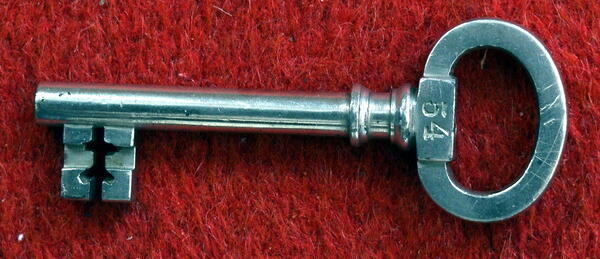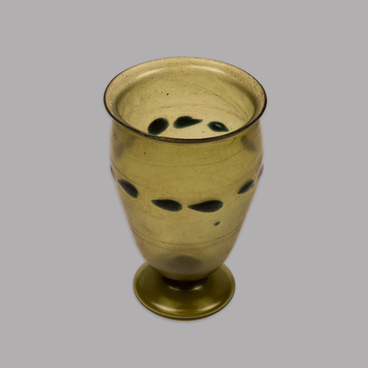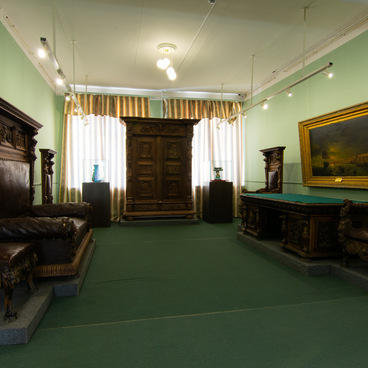The exhibition of the Lipetsk Regional Museum of Local Lore includes a unique exhibit, which witnessed the triumphant victory of the Soviet people over the Nazi invaders — it is a key to one of the offices in the Reichstag building. It was donated to the museum by the military photojournalist Ivan Alexandrovich Nartsissov, who captured the war with a camera from the beginning and all the way to Berlin.
The photographs of Ivan Alexandrovich featured both the harsh front-line everyday life, the short moments of leisure, and the triumph of the great victory. Ivan Nartsissov was born in Lipetsk on April 17, 1913. In 1939, the Central Committee of the Komsomol, the highest body of the Komsomol, sent him to the city of Frunze, Kirghiz SSR (currently Bishkek, the capital of Kyrgyzstan), where he began his career in the youth newspaper “The Komsomolets of Kirgizia”.
In 1940, he was drafted into the army and served as a radio operator. As soon as the Great Patriotic War began, his military unit was sent to the front. He had his baptism of fire in the Smolensk region, in the battles for the city of Yelnya.
Ivan Alexandrovich Nartsissov received a shrapnel wound, refused to be put in hospital and returned to his comrades at the front. The photojournalist worked in the newspapers “For the Victory”, “Soviet Guards”, “Fight for the Motherland” and others. He also collaborated with the Soviet news agency TASS.
The role of photojournalists during the war years was extremely important. They covered the events that took place at the front, helped each soldier feel his unity with the entire army, feel like a part of a huge community of people.
Ivan Alexandrovich donated about a hundred photographs that he took during the Great Patriotic War to the Lipetsk Regional Museum of Local Lore. Many of his photographs can be found on the pages of modern school history textbooks.
Ivan Nartsissov brought not only photographs against the background of the nearly destroyed Reichstag and the Victory Column in Berlin. He also brought a key to one of the offices of the Reichstag— as a symbol of the final, unconditional victory over the enemy.
Ivan Alexandrovich was awarded the Order of the Patriotic War. 2nd class, two Orders of the Red Star and medals. After the war, he worked in the newspaper “Leninskoe Znamya”. In 1975, he started working in the regional youth newspaper “Leninets” and continued to work with TASS. Ivan Nartsissov died in 1986.
The photographs of Ivan Alexandrovich featured both the harsh front-line everyday life, the short moments of leisure, and the triumph of the great victory. Ivan Nartsissov was born in Lipetsk on April 17, 1913. In 1939, the Central Committee of the Komsomol, the highest body of the Komsomol, sent him to the city of Frunze, Kirghiz SSR (currently Bishkek, the capital of Kyrgyzstan), where he began his career in the youth newspaper “The Komsomolets of Kirgizia”.
In 1940, he was drafted into the army and served as a radio operator. As soon as the Great Patriotic War began, his military unit was sent to the front. He had his baptism of fire in the Smolensk region, in the battles for the city of Yelnya.
Ivan Alexandrovich Nartsissov received a shrapnel wound, refused to be put in hospital and returned to his comrades at the front. The photojournalist worked in the newspapers “For the Victory”, “Soviet Guards”, “Fight for the Motherland” and others. He also collaborated with the Soviet news agency TASS.
The role of photojournalists during the war years was extremely important. They covered the events that took place at the front, helped each soldier feel his unity with the entire army, feel like a part of a huge community of people.
Ivan Alexandrovich donated about a hundred photographs that he took during the Great Patriotic War to the Lipetsk Regional Museum of Local Lore. Many of his photographs can be found on the pages of modern school history textbooks.
Ivan Nartsissov brought not only photographs against the background of the nearly destroyed Reichstag and the Victory Column in Berlin. He also brought a key to one of the offices of the Reichstag— as a symbol of the final, unconditional victory over the enemy.
Ivan Alexandrovich was awarded the Order of the Patriotic War. 2nd class, two Orders of the Red Star and medals. After the war, he worked in the newspaper “Leninskoe Znamya”. In 1975, he started working in the regional youth newspaper “Leninets” and continued to work with TASS. Ivan Nartsissov died in 1986.




